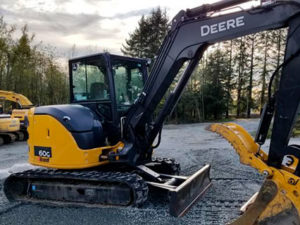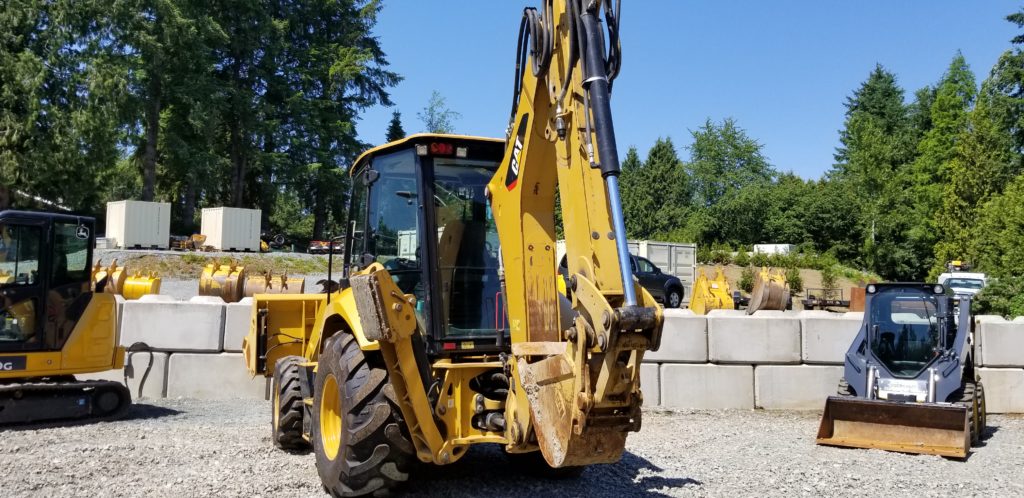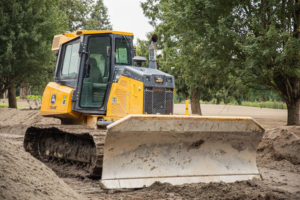Landscapers are more than lawn mowers and planters of flowers to beautify outdoor spaces. They ensure landscaping features are safe for the environment and the public as well as perform upkeep on roads and pathways for pedestrian and vehicle traffic. Landscapers also address land issues such as grading and drainage that could lead to flooding in structures and certain outdoor recreational spaces such as sports fields.
Landscape lawn and garden jobs can be big or small projects. Having the right heavy equipment and safety equipment on hand can help you perform complicated work while saving time and money. The type of heavy equipment to get for your landscaping business will depend on the types of services you provide to residential and commercial clients, such as snow removal, lawn care, tree care, heavy digging, and loading tasks. We’ve listed common heavy landscape equipment and lawn equipment and their uses so you can decide on the right ones for your business and budget.
Common Heavy Landscaping Equipment
Excavator
Medium and large excavators are commonly used landscaping tools for commercial lawn and material handling when lifting soil, sediment, stones, brush and debris. These machines have long hydraulic arms with a bucket attached. The cab area can swing 360 degrees to move materials to the desired locations or into dump trucks. An excavator can be equipped with a number of attachments including a mulcher, grapple bucket, rakes, and augers.

These large excavators are typically used for big landscaping jobs such as laying down irrigation pipes, excavating holes for foundations and structures, or when performing rough grading. You can also use an excavator for dredging the banks of ponds, rivers, and streams of built-up sediment or when the sediment has been contaminated.
Mini Excavator

Skid Steer
Skid steers are one of the most versatile tools used by landscaping contractors. They can be equipped with numerous attachments as they can work in mud, snow and heavy brush areas. This heavy equipment can be used as a light material handler, stump grinder, grader, trencher, asphalt compactor, snow remover and to dig holes. They can be used in small areas due to their size, and are commonly seen along paved areas and sidewalks as the wheels won’t damage existing pavement.

Compact Track Loader

Backhoe
When smaller compact loaders and skid steers aren’t enough to handle some medium and large jobs, then a backhoe loader would be a suitable alternative. Backhoes are specialty equipment because they durable and strong as they can move heavier materials such as large rocks and broken concrete. They can also help tote heavy water features into place, dig holes and move a large volume of materials around the landscaping site. These machines are also ideal when performing a lot of trenching and backfilling. A backhoe can be equipped with different attachments, making it a versatile heavy equipment purchase for landscapers.

Crawler Carrier
Getting materials to landscaping sites without tearing up the grass can be a difficult task for landscapers. It’s true that skid steer loaders, backhoe loaders and track loaders can do the work of hauling. Yet if you have a large amount of materials to move, it can take multiple trips across the soft and wet ground for these machines to do the task. Instead, a crawler carrier can haul more plant materials, rocks, and other items to the location at one time.

Picking Out the Right Equipment for Landscaping
Before you purchase equipment for landscaping, figure out the types of jobs that your business typically handles, the fuel usage, size of the machine, engine power, lifting capacity, storage needs and other factors. Then you can narrow down your choices based on the heavy equipment’s specs that fit into your requirements.
